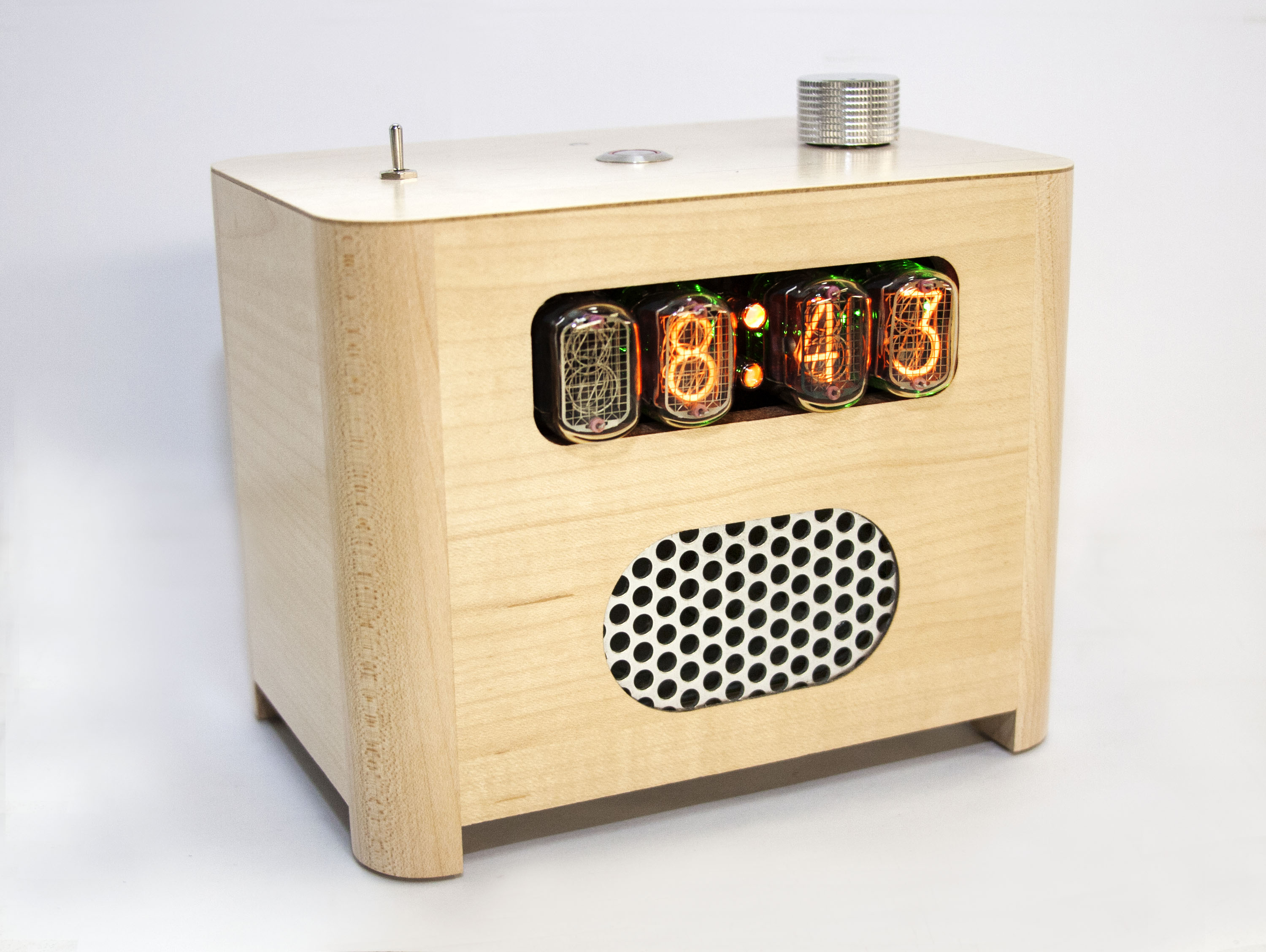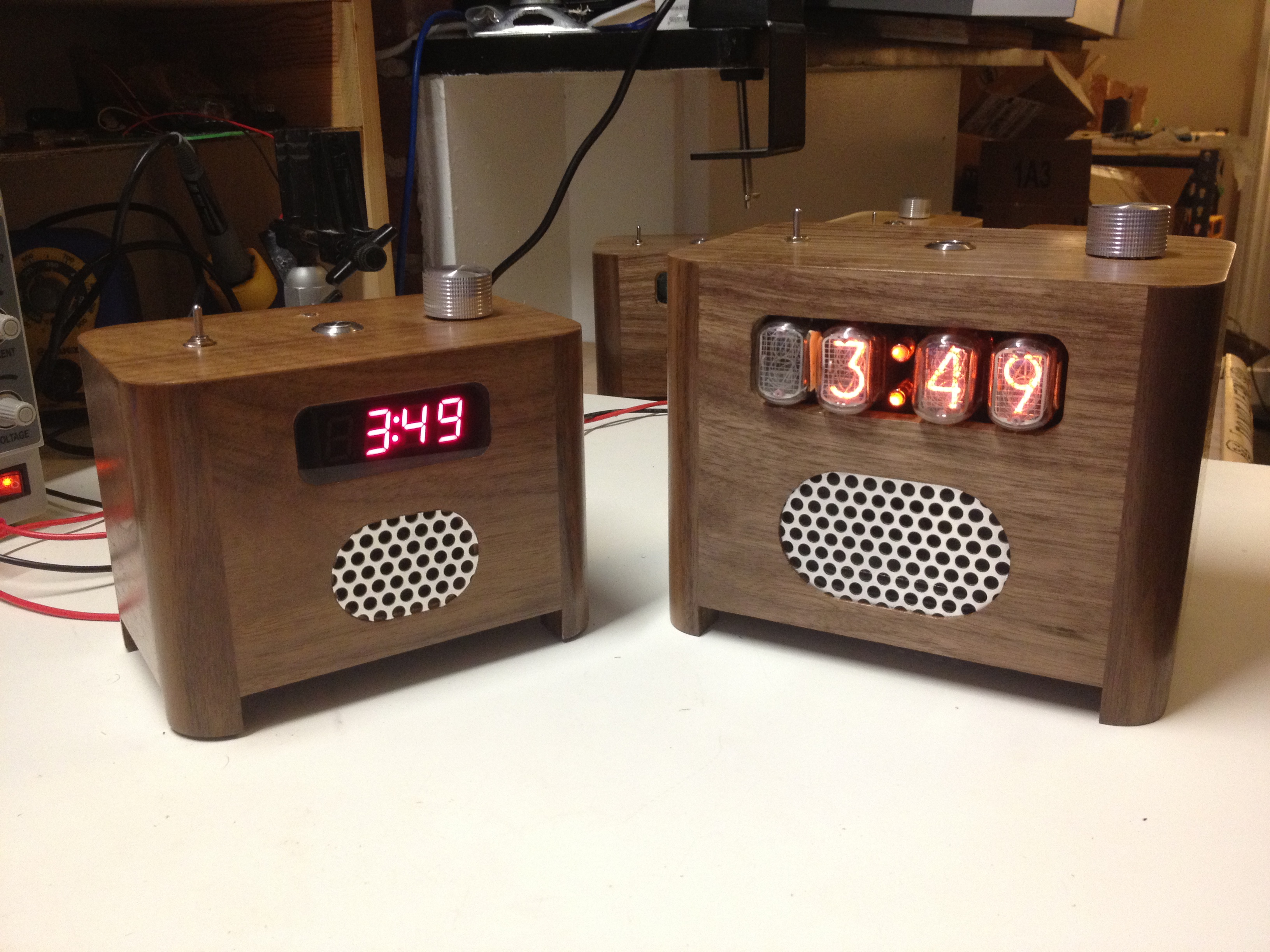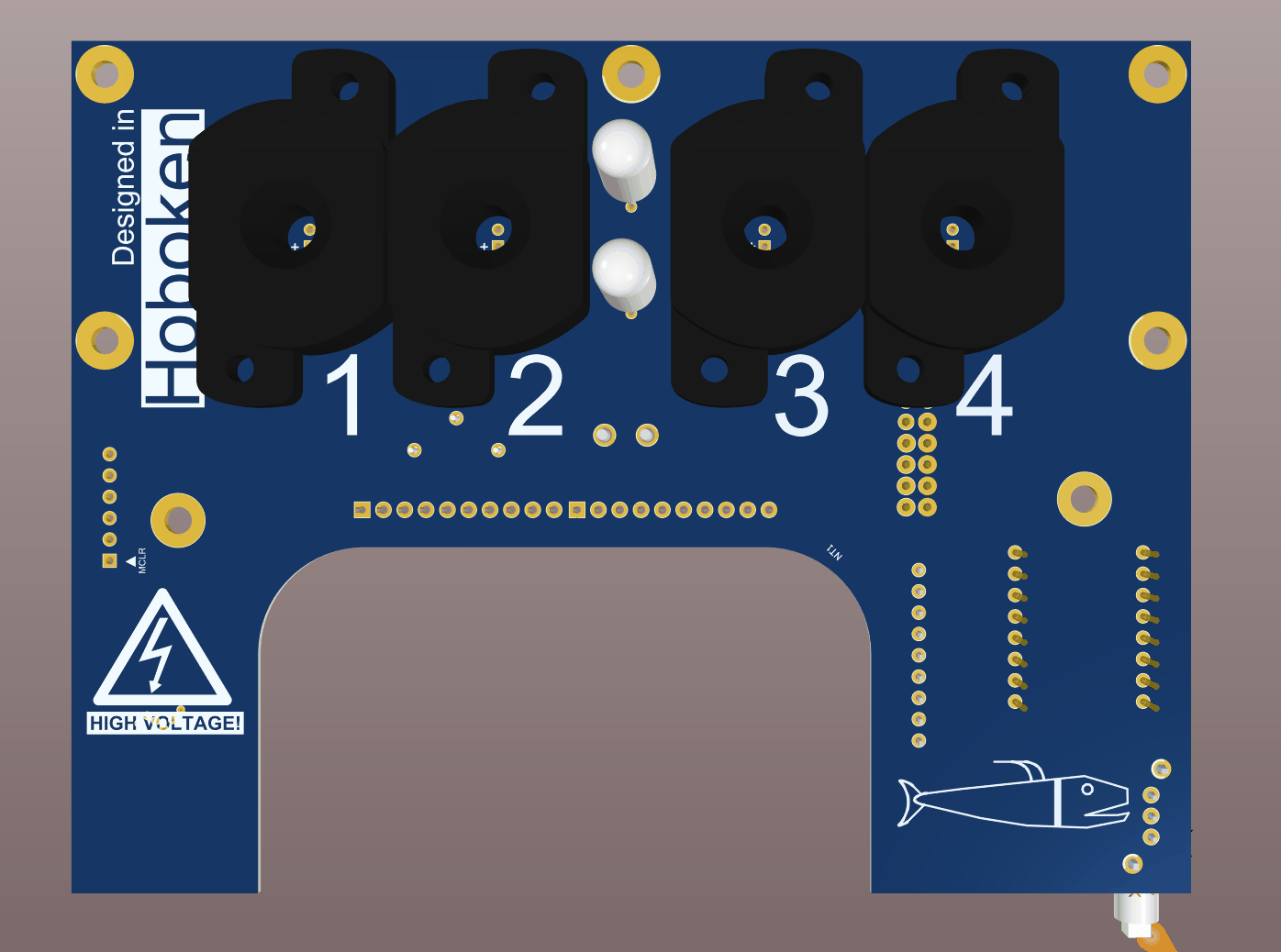The Ramos Alarm Clock was an alarm clock that forced people to get out of bed in the morning by making it impossible to shut off the alarm from bed and simply going back to sleep. It accomplished this by the use of a "defuse panel" which was a wireless keypad that the user would place somewhere far away from their bedroom. Most users put it in the bathroom; more extreme users put in their car. When the alarm went off, the user had to get out of bed, and walk to the defuse panel and punch in a defuse code to turn off the alarm. This gave well intentioned users that really wanted to get up early but just had a hard time escaping the cozy gravitational field of their bed the push they needed to start their day fresh and early (kinda like how mom woke you up during high school).
This project started out as a kickstarter campaign.
This source was written by Nolan Sandberg, and Paul Sammut.
This is the source code for the Nixie Ramos, LED Ramos and the defuse panel. These 3 devices shared similar code and all ran on the same PIC18F45K20 microcontroller. The code includes the MPLAB X project files and the compiler used was the C18 compiler. All source is written in C and programmed using a PicKit3. There are loads of features in the clock such as:
- Sound system for playing tones and a voice menu
- Digit cycling on each minute for Nixie Tube health
- The defuse code could be either the day's date or a random code
- An external RTC with an built in TCXO with a clock accuracy of 3 ppm
- Multiplex display driver that allowed for 32 levels of brightness for each tube
- Auto-dim brightness with an light sensor, to dim the display to a settable level when there is no light in the room.
Included in this repo are also all the schematics, gerbers and Altium files. The boards were panelized and mass produced. Great consideration was taken to minimize the BOM count and facilitate assembly. These clocks all passed FCC testing, even the Nixie! One of the very few Nixie Clocks that's FCC certified. The EMC report is included in the schematics folder.
IN-12A Nixie tubes were used. I bought thousands in bulk from sellers in the Ukraine and Russia. When I bought them in 2012-2014 the price was around $1.50 a tube shipped.
The nixie circuit used a Taylor Edge 1364 high voltage power supply that supplied the 170 Volts. The display was controlled using ULN2003s in a neat way. You can't find 8 channel transistor IC's that can handle 180V's anymore, and I didn't want to use the original Russian nixie drivers IC's for reliability issues, so I used the ULN2003's which had a max volt rating of 100V and clamped the common voltage to 91V. This meant that in their off state, the tubes saw 91V, which wasn't enough to fire the tubes, and in their on state they saw the full 170V. The ULN's only saw the delta of 170 and 91, which was below the max rated voltage, so it was happy. Out of the thousand clocks we sold, we never had an issue with the driver circuitry.
The wireless data link between the defuse panel and the clock is handled by a CC1101 chip on board an Anaren module. This module was the most expensive part of the BOM ($11 at high volume) but it was pre-certified as an intentional radiator. Interfacing to the CC1101 chip was a bit of a pain, the but the source is all there as a reference. Great chip and we had very good range throughout a house and sometimes outside the house.
We made a thousand of these clocks and only had one return. But, there was one major bug that we caught early on and it had to do with the sound system communication. A couple of people would email us, swearing that their alarm didn't go off.
It was a really interesting problem because you could never replicated it on the bench, and when the user would power cycle their clock it would magically work again. This was because the problem was related to accumulated oscillator drift which effected the PWM communication timing with the sound chip, meaning that whenever you restarted the clock the problem would go away. The problem would only manifest itself in a tiny percentage of our clocks, after the clock was running for a long period of time. I was never ever able to reproduce the problem, but I was able to pin point it to a less than robust communications PWM protocol with the sound chip.
In the original firmware, the PIC18, who handled all the state flow stuff, would send a signal to the sound chip using a PWM serial comms protocol to play a sound. The PIC18 would assume that the sound was playing and happily move on. This worked all the time during bench testing and our beta testing, and our initial shipments. But it had no error checking and when you start playing statistics, with a 1000 devices each with an alarm event every day, with oscillator drift ranges, it meant that a tiny percentage of those sound commands sent through PWM had their pulse widths exceeding the limits, meaning a poor person's alarm wouldn't go off that morning.
I fixed it by monitoring a DO line from the sound chip that would go high when sound was playing. On every sound command sent by the PIC18, it made sure to monitor the response from the sound chip. If it detected no sound was playing it would do a live oscillator re-cal and resend the command. I was lucky to have routed this line to a DI pin on the PIC18, so it was a simple firmware fix.
Included are packaged Altium files for all the boards. They were packed using Altium 2019. Included are also all the panelized boards. The circuit boards were 4 layer: two signal, a ground and a power plane.



